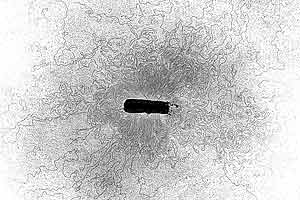 There is an awful lot of DNA stuffed into every cell.Ben's blog on stars and grains of sand got me to thinking about DNA. How long would the DNA from every living thing on Earth stretch? Could we make it to the next star? The next galaxy? The end of the Universe?
There is an awful lot of DNA stuffed into every cell.Ben's blog on stars and grains of sand got me to thinking about DNA. How long would the DNA from every living thing on Earth stretch? Could we make it to the next star? The next galaxy? The end of the Universe?
Let's start out with people. Each human cell has around 6 feet of DNA. Let's say each human has around 10 trillion cells (this is actually a low ball estimate). This would mean that each person has around 60 trillion feet or around 10 billion miles of DNA inside of them.
The Earth is about 93 million miles away from the sun. So your DNA could stretch to the sun and back 61 times. That is one person’s DNA.
The best estimate I could find of the world’s population of people is around 6.7 billion. When we multiply 10 billion miles of DNA by 6.7 billion, we end up with, well, a really big number. Something like 6.7 X 1019 or 67 quintillion miles. That is too big a number so let’s convert this to light years.
A light year is around 6 X 1012 miles. So all human DNA would stretch 11.2 million light years. The closest star to Earth (besides the sun) is around 4.2 light years. So we shoot way past that! The Andromeda galaxy is about 2.5 million light years away from us so human DNA could stretch there and back two or three times.
